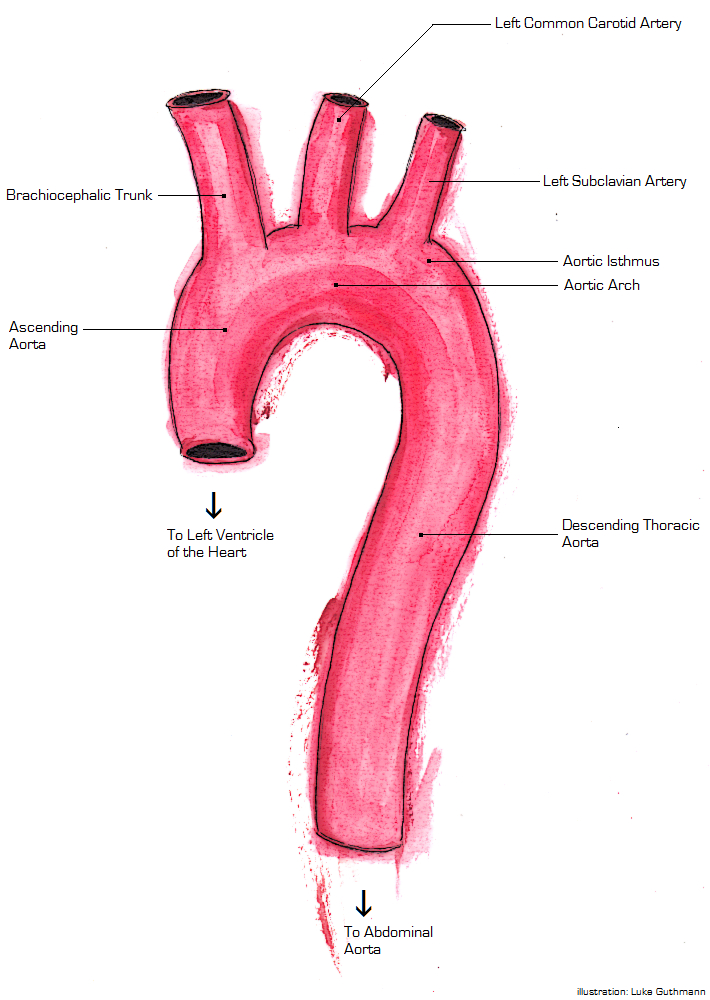Penetrating Atherosclerotic Ulcer

A penetrating atherosclerotic ulcer (PAU) is an atherosclerotic lesion that ulcerates, leading to a hematoma forming within the walls of the aorta.
Cause
Diagnosis
The condition is often associated with thickening of the aortic wall, and can be differentiated from similar conditions (atherosclerotic plaque and a thrombus) through the use of computed tomography and magnetic resonance imaging, though the latter is superior. Transesophageal echocardiography and intravascular ultrasonography may also be used in differentiation.
Treatment
Complications such as rupture or other life-threatening conditions are rare. Treatment may involve surgery, particularly when signs indicating worsening are present (the patient is unable to control their pain or changes in blood pressure).
Notes
- ^ a b c Hayashi H, Matsuoka Y, Sakamoto I, et al. (2000). "Penetrating atherosclerotic ulcer of the aorta: imaging features and disease concept". Radiographics. 20 (4): 995–1005. doi:10.1148/radiographics.20.4.g00jl01995. PMID 10903689.
- ^ Chu, B; Yuan C; Takaya N; et al. (March 2006). "Serial high-spatial-resolution, multisequence magnetic resonance imaging studies identify fibrous cap rupture and penetrating ulcer into carotid atherosclerotic plaque". Circulation. American Heart Association. 113 (12): e660–e661. doi:10.1161/CIRCULATIONAHA.105.567255. PMID 16567574. Retrieved 2008-05-28.
External links
| This article about a medical condition affecting the circulatory system is a stub. You can help Wikipedia by expanding it. |